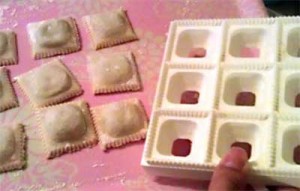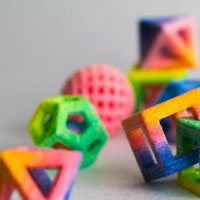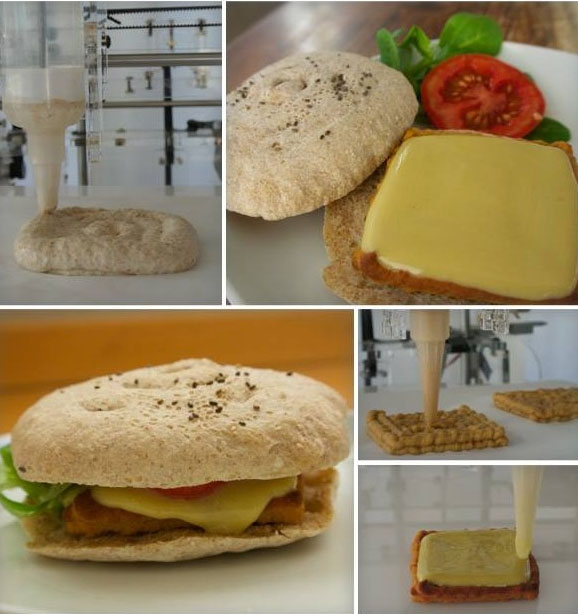Make room in your kitchen for a gizmo that prints food. Mind-boggling but true. The 3D printing technology is already developed and there are advance-guard food preparation models on the market, selling for $99 to $5,000.

Here’s how it works: Suppose you have ravioli in mind. Assemble the ingredients — the first step you always take in preparing meals. Then the machine takes over, “printing” a thin layer of pasta from one of its capsules. Next comes a layer of your tomato-based filling from another capsule, followed by another layer of pasta filling for the standard ravioli design.
The 3D printers do NOT make something from nothing, stresses Lynette Kucsma, co-founder of Natural Machines in Barcelona, Spain. The company calls its food printer the Foodini, of course. It is scheduled for release in October and will sell for about $1,300 initially. Kucsma predicts that the device will be as common as the kitchen microwave and that it will take less time to catch on with the current tech-savvy public. She feels it will offer a more healthful approach to food preparation, edging out some of the fast foods that are standard American fare these days.
“The point is to get people away from eating processed foods and start cooking again,” she said, but cooking in a Space Age mode. In a time-pressed society, having a mini food manufacturing device in the kitchen will be a more healthful approach, as well as saving time, she predicted.

For instance, in the above example, each ravioli takes under a minute. That means 10 in 10 minutes. The food printer is an assembly device that does the tedious work of putting things in order and doing the tedious chores, such as rolling pasta dough. You still must add necessary ingredients and cook the assembled food. Natural Machines and other hopeful competitors in the emerging market are already working on companion pieces that will take care of the cooking.
Cornell Creative Machines Lab, which also is creating a 3D food printer, joins in making futuristic claims for the technology, predicting that dining out as well as cooking in will be significantly affected. The company cites USDA figures that show the average American spends 33 minutes a day on food preparation. Food printing could become a set-and-forget process that could cut the time by 150 hours per year.
Before such devices become standard household equipment, they are likely to enhance fancy items such as pastries for restaurant chefs. But standard microwaves are already shuddering in their shoes as they see the shape of the future in 3D food printing.
